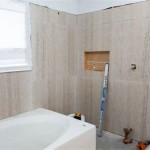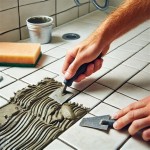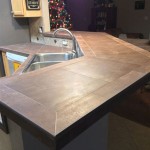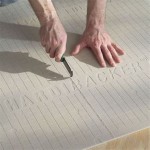How To Install Floating Floor Over Asbestos Tile
Many homeowners are faced with the challenge of updating flooring in older homes that contain asbestos-containing floor tiles. Due to the health risks associated with asbestos, complete removal is often a costly and complicated process requiring specialized professionals. Fortunately, installing a floating floor over existing asbestos tile offers a viable and often more economical alternative. This approach encapsulates the asbestos material, preventing the release of harmful fibers and providing a new, aesthetically pleasing surface.
Before commencing any work, it is crucial to understand the potential risks and necessary precautions. Asbestos, when disturbed, releases microscopic fibers that can cause serious respiratory illnesses, including asbestosis, lung cancer, and mesothelioma. While the tiles themselves are relatively harmless when intact, cutting, breaking, or sanding them poses a significant health hazard. Therefore, the key to a safe installation lies in minimizing disturbance to the existing asbestos tile.
This article will outline the steps involved in safely installing a floating floor over asbestos tile, emphasizing proper preparation, material selection, and installation techniques that minimize the risk of asbestos exposure. It is important to note that this information is for informational purposes only and professional consultation is always recommended. Local regulations and building codes regarding asbestos abatement may also apply and should be consulted prior to any work.
Assessing the Existing Asbestos Tile
Prior to any installation, thoroughly assess the condition of the existing asbestos tile floor. Look for loose, cracked, or damaged tiles. If the existing floor is in poor condition, with a high percentage of broken or missing tiles, encapsulation may not be the most suitable solution. In such cases, professional asbestos abatement may be necessary. However, if the tiles are generally intact and securely bonded to the subfloor, then encapsulation is often a feasible option.
Document the condition of the floor with photographs and notes, paying particular attention to areas with damage. Note the type of subfloor underneath the asbestos tile (concrete, wood, etc.) as this will influence the choice of underlayment and installation methods. If uncertain about the presence of asbestos, it is highly recommended to have a sample of the tile tested by a certified laboratory. This will provide definitive confirmation and allow for informed decision-making.
Accurate measurements of the room are essential for calculating the required amount of flooring material and underlayment. Account for doorways, closets, and other obstacles that may affect the layout. A detailed floor plan will also be helpful in planning the installation process and minimizing waste.
Preparing the Subfloor and Asbestos Tile Surface
The preparation phase is critical for a successful floating floor installation. The primary goal is to create a smooth, stable, and clean surface that will provide a solid foundation for the new flooring. This minimizes the risk of unevenness, squeaking, or premature wear.
Begin by thoroughly cleaning the existing asbestos tile floor. Use a mild detergent and warm water, avoiding harsh chemicals or abrasive cleaners that could damage the tiles or release asbestos fibers. A damp mop is preferable to soaking the floor, as excessive moisture can seep into the subfloor and cause problems. Allow the floor to dry completely before proceeding.
Next, address any minor imperfections in the asbestos tile floor. Fill small cracks or gaps with a self-leveling patching compound designed for use over tile. This will create a smoother surface and prevent the new flooring from conforming to these imperfections. Follow the manufacturer's instructions for mixing and applying the patching compound, ensuring it is fully cured before proceeding.
For larger areas of damage or unevenness, consider applying a layer of self-leveling underlayment. This is a cement-based product that is poured over the existing floor and spreads out to create a perfectly level surface. Self-leveling underlayment is particularly useful when the existing floor has significant variations in height or slope. Ensure the underlayment is compatible with both the asbestos tile and the chosen floating floor material.
Once the patching compound or self-leveling underlayment is fully cured, vacuum the floor thoroughly using a HEPA (High-Efficiency Particulate Air) filter vacuum. This will remove any dust or debris that could interfere with the adhesion of the underlayment and floating floor. The use of a HEPA filter is crucial to capture any asbestos fibers that may have been released during the preparation process.
Finally, apply a sealant specifically designed to encapsulate asbestos. This sealant forms a protective barrier over the asbestos tile, preventing the release of fibers into the air. Follow the manufacturer's instructions carefully, applying multiple coats as recommended. Allow the sealant to dry completely before proceeding to the next step.
Installing the Underlayment and Floating Floor
The underlayment serves several important functions in a floating floor installation. It provides cushioning, reduces noise transmission, and helps to even out minor imperfections in the subfloor. Selecting the appropriate underlayment is essential for achieving optimal performance and longevity of the flooring.
Choose an underlayment specifically designed for use with floating floors. Options include foam, cork, and rubber underlayments. Consider the specific requirements of the chosen floating floor material and the desired level of sound insulation when making your selection. Some underlayments come with a built-in moisture barrier, which is particularly important in areas with high humidity or where the subfloor is prone to moisture.
Roll out the underlayment across the prepared asbestos tile surface, following the manufacturer's instructions. Overlap the seams slightly and use seam tape to secure them together. This will prevent the underlayment from shifting during the installation process. Trim the underlayment to fit the perimeter of the room, leaving a small expansion gap around the walls.
Now for the installation of the floating floor itself. Floating floors are designed to interlock, creating a seamless surface without the need for adhesives or nails. Begin by laying the first row of planks or tiles along a straight wall, leaving a small expansion gap (typically 1/4 to 3/8 inch) between the flooring and the wall. Use spacers to maintain this gap consistently.
Connect the subsequent rows of flooring by interlocking the edges, following the manufacturer's instructions. This typically involves angling the planks or tiles and snapping them into place. Use a tapping block and hammer to ensure a tight and secure fit. Avoid using excessive force, as this could damage the flooring.
When cutting planks or tiles to fit around obstacles or at the end of a row, use a sharp utility knife or a flooring cutter. Always cut the flooring with the finished side facing up to minimize chipping. Remember to maintain the expansion gap around walls and other vertical surfaces.
Once the entire floor is installed, remove the spacers and install baseboards or quarter-round molding to cover the expansion gaps around the perimeter of the room. This will create a clean and finished look.
Proper ventilation is crucial throughout the installation process. Open windows and use fans to circulate air. Wear appropriate personal protective equipment, including a respirator mask with a HEPA filter, gloves, and eye protection. Dispose of any waste materials containing potential asbestos contamination properly, following local regulations.
In summary, installing a floating floor over asbestos tile is a viable option for updating flooring while encapsulating the asbestos material. Care should always be given to minimise disturbace of the existing asbestos tile. This requires careful assessment, thorough preparation, and proper installation techniques. Always consult with a qualified professional and adhere to local regulations regarding asbestos abatement to ensure a safe and successful installation.

Can I Put A New Floor Over Asbestos Tiles Branch Environmental

How To Install Tile Over Asbestos Ehow

Installing Hardwood Over Asbestos Tiles Homeadvisor

How To Install Hardwood Flooring Over Asbestos Tiles 123

How To Waterproof A Basement

Perfectpaint Floating Floor Prep Paint Over Asbestos Mastics And Other Difficult Floors

Flooring That Can Be Installed Over Asbestos Tile

What Flooring Should I Use Over Old Asbestos Tiles

Perfectpaint Floating Floor Prep Paint Over Asbestos Mastics And Other Difficult Floors

Flooring That Can Be Installed Over Asbestos Tile
Related Posts








